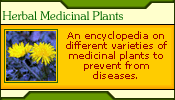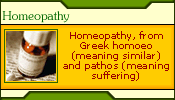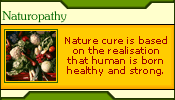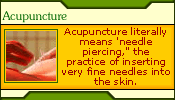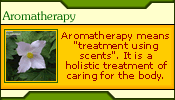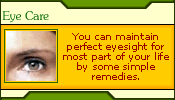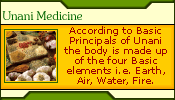|
Recovery. Therapeutic massage helps the body recover from the stresses
of strenuous exercise, and facilitates the rebuilding phase of conditioning.
The physiological benefits of massage include improved blood and
lymph circulation, muscle relaxation, and general relaxation. These,
in turn, lead to removal of waste products and better cell nutrition,
normalization and greater elasticity of tissues, deactivation of
trigger points, and faster healing of injuries. It all adds up to
relief from soreness and stiffness, better flexibility, and less
potential for future injury.
In addition to general recovery, massage may also focus on specific
muscles used in a sport or fitness activity. For example, areas
of greater stress for runners and dancers are in the legs, for swimmers
in the upper body, for tennis players in the arms. These areas are
more likely to be tight, lose flexibility, and develop trigger points.
Over-training. Adequate recovery is also a major factor in avoiding
the over-training syndrome. Over-training is characterized by irritability,
apathy, altered appetite, increased frequency of injury, increased
resting heart rate, and/or insomnia. It occurs when the body is
not allowed to recover adequately between bouts of heavy exercise.
Therapeutic massage helps you avoid over-training by facilitating
recovery through general relaxation, and its other physiological
effects.
Trouble spots. . You may also have your own unique trouble spots,
perhaps from past injuries. A massage therapist can pay special
attention to these areas, monitor them for developing problems,
and help keep them in good condition. An experienced massage therapist
can also compliment treatment received from other health care professionals
for various injuries. You may also have your own unique trouble
spots, perhaps from past injuries. A massage therapist can pay special
attention to these areas, monitor them for developing problems,
and help keep them in good condition. An experienced massage therapist
can also compliment treatment received from other health care professionals
for various injuries.
Three Areas of Sports Massage
Sports massage may involve prevention and maintenance programs,
on-site treatment before and after an athletic event, and rehabilitation
programs for those who are injured during the program.
Maintenance Massage
An effective maintenance program is based on the massage therapist's
understanding of anatomy and kinesiology, combined with an expert
knowledge of which muscles are used in a given sport and which are
likely candidates for trouble. By zeroing in on particular muscle
groups and working specific tissues, the sports massage therapist
can help the athlete maintain or improve range of motion and muscle
flexibility. The overall objective of a maintenance program is to
help the athlete reach optimal performance through injury-free training.
Event Massage
Pre-event. Pre-event sports massage is given within the
four hours preceding an event to improve performance and help decrease
injuries. It is used as a supplement to an athlete's warm-up to
enhance circulation and reduce excess muscle and mental tension
prior to competition. It is normally shorter (10-15 minutes) than
a regular conditioning massage, and focuses on warming-up the major
muscles to be used, and getting the athlete in a good mental state
for competition. It also improves tissue pliability, readying the
athlete for top performance. Certain massage techniques can help
calm a nervous athlete, and others can be stimulating. Pre-event
sports massage is given within the four hours preceding an event
to improve performance and help decrease injuries. It is used as
a supplement to an athlete's warm-up to enhance circulation and
reduce excess muscle and mental tension prior to competition. It
is normally shorter (10-15 minutes) than a regular conditioning
massage, and focuses on warming-up the major muscles to be used,
and getting the athlete in a good mental state for competition.
It also improves tissue pliability, readying the athlete for top
performance. Certain massage techniques can help calm a nervous
athlete, and others can be stimulating. Pre-event sports massage
is given within the four hours preceding an event to improve performance
and help decrease injuries. It is used as a supplement to an athlete's
warm-up to enhance circulation and reduce excess muscle and mental
tension prior to competition. It is normally shorter (10-15 minutes)
than a regular conditioning massage, and focuses on warming-up the
major muscles to be used, and getting the athlete in a good mental
state for competition. It also improves tissue pliability, readying
the athlete for top performance. Certain massage techniques can
help calm a nervous athlete, and others can be stimulating.
Inter/Intra-event. Inter- and intra-event massage is given
between events or in time-outs to help athletes recover from the
preceding activity, and prepare for the activity coming up. It is
also short, and focuses on the major muscles stressed in the activity.
Inter- and intra-event massage is given between events or in time-outs
to help athletes recover from the preceding activity, and prepare
for the activity coming up. It is also short, and focuses on the
major muscles stressed in the activity.
Post-event. Post-event sports massage is given after a competition
and is mainly concerned with recovery. It is geared toward reducing
the muscle spasms and metabolic build-up that occur with vigorous
exercise. Recovery after competition involves not only tissue normalization
and repair, but also general relaxation and mental calming. A recovery
session might be 15 minutes to 11/2 hours in length. Post-event
sports massage is given after a competition and is mainly concerned
with recovery. It is geared toward reducing the muscle spasms and
metabolic build-up that occur with vigorous exercise. Recovery after
competition involves not only tissue normalization and repair, but
also general relaxation and mental calming. A recovery session might
be 15 minutes to 11/2 hours in length.
Rehabilitation Massage
Even with preventive maintenance, muscles cramp, tear, bruise, and
ache. Sports massage can speed healing and reduce discomfort during
the rehabilitation process.
Soft tissue techniques employed by sports massage therapists are
effective in the management of both acute and chronic injuries.
For example, adding lymphatic massage to the "standard care"
procedure in the acute stage of injury will improve control of secondary,
hypoxic injury and enhance edemous fluid removal throughout the
healing cycle. Trigger point techniques reduce the spasms and pain
that occur both in the injured and "compensation" muscles.
Cross-fiber friction techniques applied during the subacute and
maturation phases of healing improve the formation of strong and
flexible repair tissue, which is vital in maintaining full pain-free
range of motion during rehabilitation.
In all cases, such massage techniques are employed in collaboration
with other appropriate medical care. For example, encouraging circulation
around a bruise, but not directly on it, through the use of compression,
cross-fiber techniques or even long, deep strokes is only used after
appropriate medical referral and diagnostics indicate that there
are no clots formed in the area which may embolize.
|


